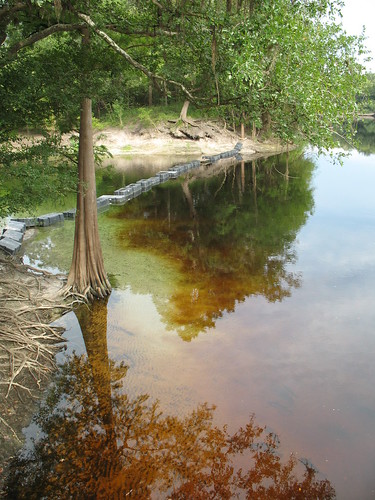
I opened the cabin and then walked down to the river first. I knew that the river level had been creeping up again, little by little. It was very obvious though this morning. The tannic water from the river is creeping back into the spring. You can see some Mullet swimming in the water in the bottom right of the photo, just into the brown water. I really hope it starts dropping again soon. I don't mind the higher water as compared to the past few summers, but when it stays high like this, it doesn't take much to brown out the spring completely. I'm not ready for that again so soon. Also near the river, I took some time to admire these Morning Glories. They are so much more delicate and subtle than the dark purple ones by the entrance gate.
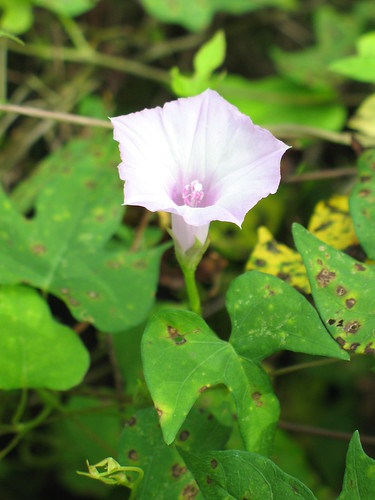
Next, I made my way around through the picnic area and down to the spring. I walked through the woods a bit today instead of down the walkway. I'm glad that I did. I saw this stunning flower. I had seen it in bloom from the walkway last week, but I couldn't see it well and I thought it was just another Swamp Mallow. It is in the same family but it is slightly different from the ones that grow along the entrance road and bloomed earlier this summer. This one had such a striking red center. I realized that the flower next to it had already bloomed and the bloom was fading away. The whole flower was pink though! I will watch this one and see if it turns pink as well.
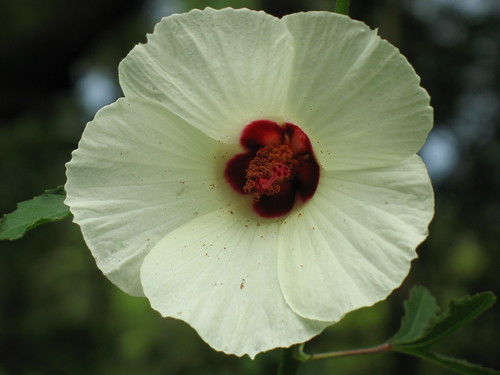
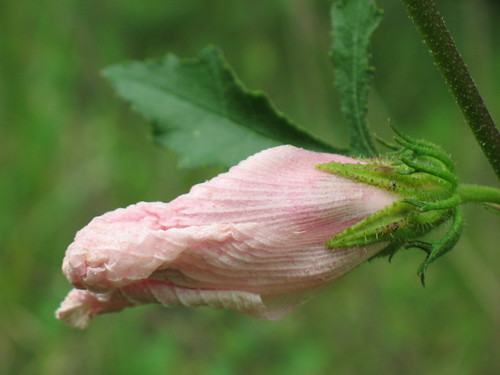
Very close to the Mallow, I saw a little Pearl Crescent. It was very good to me and stayed still while I took several photos of it from different angles. This is a pretty common little butterfly that can be found all over the Eastern US and the Midwest.
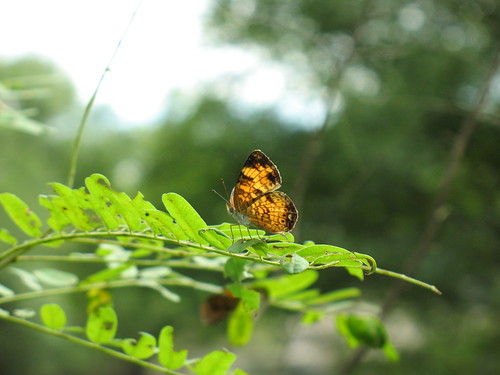

After my walk, it was back to my usual Monday. I loaded up my paperwork, prepared a list of supplies that I needed and headed to Ichetucknee. They are short staffed in the office these days, so while I made photocopies of our brochures and gathered supplies, I helped out by answering the phone. At Troy, I answer the same questions over and over on the phone. They do the same thing at Ichetucknee, but there are different questions. I didn't mind answering different questions for a change... but I'm glad that I didn't have to stay very long and I am also glad that the Troy phone doesn't ring as often as the Ichetucknee phone. On my way out, I took a minute to admire the butterfly garden. It has been a work in progress since I was working at Ichetucknee, three years ago. It was an idea that I had that very slowly grew into this lovely place with the hard work of many other people. I am thrilled with the way it turned out and I look forward to watching it grow and change through the years. I love the rustic trellises and the bench. I even saw some butterflies admiring it too!

When I left Ichetucknee, I headed to Adams Tract. I thought that when I refreshed the chlorine last week, I would be done with any water treatment hassles for a while. I was wrong. The volunteer at Adams Tract called me this weekend to say that the levels were low again. I was really frustrated because I knew that everything was working properly and there just shouldn't be anything wrong. I figured out the problem as soon as I got there and was kicking myself for not realizing it sooner. I really could have saved myself some trouble if I had figured it out months ago. There is a small opening in the top of the chlorine storage container. Every time it rains, the chlorine is diluted a little more. We had over an inch of rain on Friday, which made a noticeable difference in the chlorine level in the well water. I will be brainstorming to find the best solution for this issue this week. I am glad to have the answer to this ongoing mystery though!
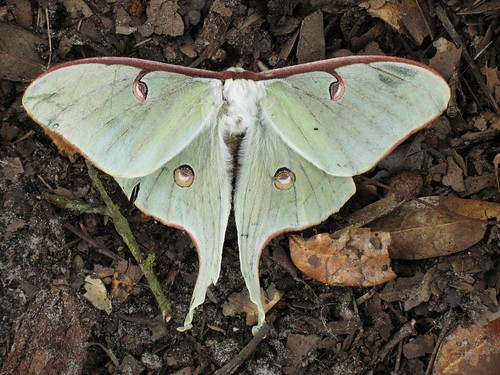
While I was running water and checking faucets, I found this Luna Moth. It was dead, so it was a great photo-op. I think that Luna Moths must be THE most beautiful moth species. I love their pale green color, the very unique shape of their wings and the subtle "eye" spots on their wings.
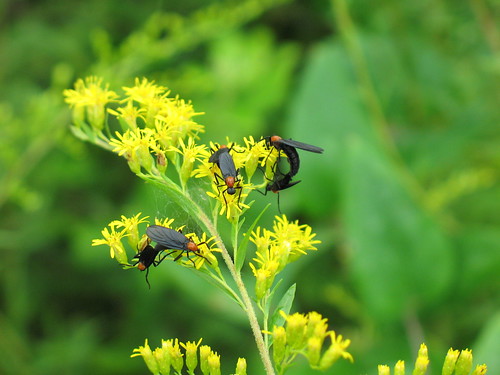
On my drive out of the Tract, I went slowly to admire the wildflowers and the life buzzing around them. I noticed something that does not interest me though... Lovebugs. If you live in the Gainesville area, you know these bugs all too well and you probably believe that they were a product of a University of Florida experiment that went wrong. The local legend goes that UF created these creatures to control the mosquito population and some escaped. Lovebugs (which are actually flies and not true bugs) where initially found in the Texas and Louisiana area and have spread to establish themselves in several other states, including Florida. Because of their relatively new status as Florida residents and the immense numbers of them seen during each mating season, people talk and stories spread. Lovebugs are seen twice a year, in the late spring and again in late summer. As the adults emerge, they connect to mate and spend the rest of their adult life this way. Some years, the emergence of the Lovebugs is so drastic that its sometimes hard to drive because of the swarms of them splattering on the windshield. Several years ago we had to leafblow the restrooms every morning to get the Lovebugs out. The broom would just squish them and make a bigger mess. Lovebugs are a pest to so many people and seemingly have no purpose on the planet... they definitely don't eat mosquitoes! I learned though, that the larvae are useful. If you have a lovely grass lawn, you may have Lovebug larvae to thank for it. They live in and eat the thatch in the grass. Its the layer of dead grass clippings and other debris just above the soil. When the Lovebug larvae eat the thatch, it allows air and moisture to reach the soil, it returns nutrients held in that debris to the soil, and it makes the area unsuitable for some common grass pests. Even with that knowledge, I am still not looking forward to Lovebugs emerging at Troy. I hope its a light year!
1 comment:
I love the Luna Moth, they are so beautiful.
Post a Comment